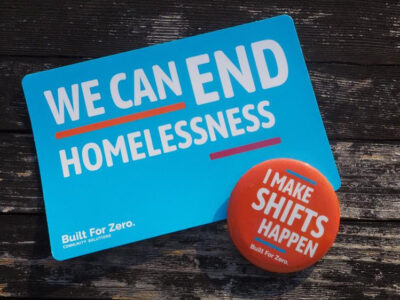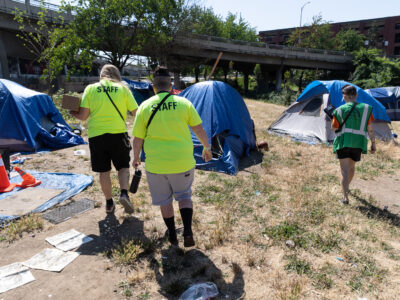July 27, 2023
July 2023 Built for Zero Update
The Joint Office is excited to share updates on our work to implement Built for Zero, a framework for measurably ending homelessness with a data-driven approach. (Don’t know what Built for Zero is? Learn more about it here.)
Filling gaps in our data: Outreach Data Collection Pilot launching in August
The cornerstone of our Built for Zero work is building and using a quality by-name list of individuals experiencing chronic homelessness.
Thanks to that quality by-name list, we can see that providers funded through the Joint Office of Homeless Services are rehousing hundreds of people experiencing chronic homelessness, and track that housing progress month by month.
But even as the Joint Office continues to make strides in improving our quality by-name list, we are also working to address known gaps in our data to ensure the list reflects our community as best as possible.
One of the biggest challenges we’ve faced is that people who are experiencing chronic homelessness — but who are not engaged in mainstream services — won’t be reflected in our data.
To help fill that gap, the Joint Office will launch a pilot program next month which street outreach teams will be testing a new data collection software tool and a new approach to Coordinated Access, the centralized housing and services system.
This pilot is bringing data collection, along with an entrypoint to housing and services, directly to people living unsheltered — with the potential to reach people who’ve never received traditional services. It will build on work already begun as part of the Housing Multnomah Now program.

Currently, the quality by-name list is based on data from the Homeless Management Information System (HMIS), the data infrastructure managed by the Joint Office and used across our homeless services system.
The data in our HMIS is created when people engage in services, since our contracted providers input data into HMIS as they engage with clients. That means our HMIS has a wealth of data on people experiencing homelessness and engaged in services in our region, but it also means that people who aren’t engaged in services won’t be reflected in our current data.
The pilot is testing out several things that we hope will improve not just data collection, but the Joint Office’s ability to effectively reach and connect people to services, incorporating new approaches in several key areas: data collection, assessment for Coordinated Access, and outreach coordination.
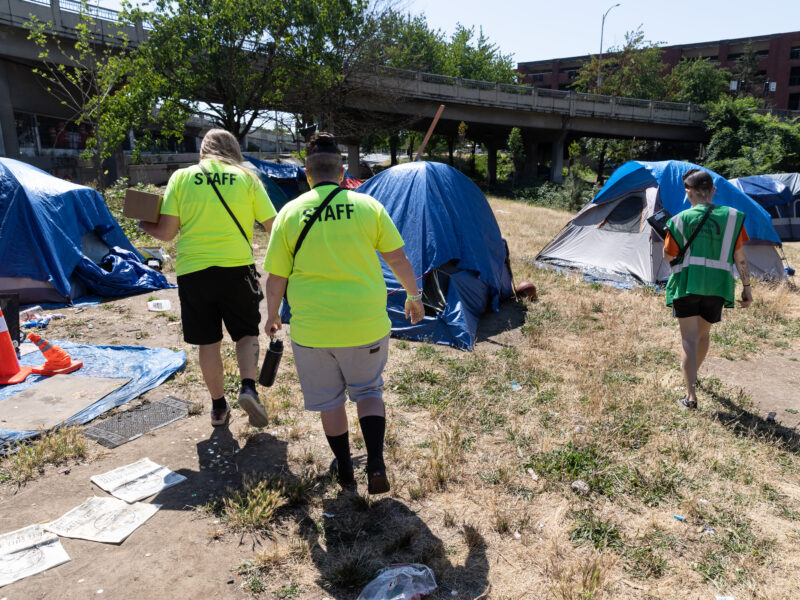
Reducing barriers to Coordinated Access with a new approach to assessments, tied to Built for Zero
The Joint Office has known for some time that we needed to update our approach to the assessment tool used for Coordinated Access for Adults, a centralized applicant and housing database that prioritizes access to transitional or permanent housing based on individual assessments and systems of care.
Providers use an assessment tool, called the Vulnerability Index-Service Prioritization Tool (VI-SPDAT), to assess someone’s needs before they are added to Coordinated Access for Adults. It assesses an individual’s vulnerability, which helps ensure that individuals who are in the most need are prioritized for services.
The new data tool the Joint Office is piloting means providers can take a new, phased approach to the VI-SPDAT — one that is trauma-informed, equitable and person-centered. The new approach starts with a smaller set of questions that meets the minimum requirements to identify an individual, get them connected to services and be reflected in our Built for Zero data.
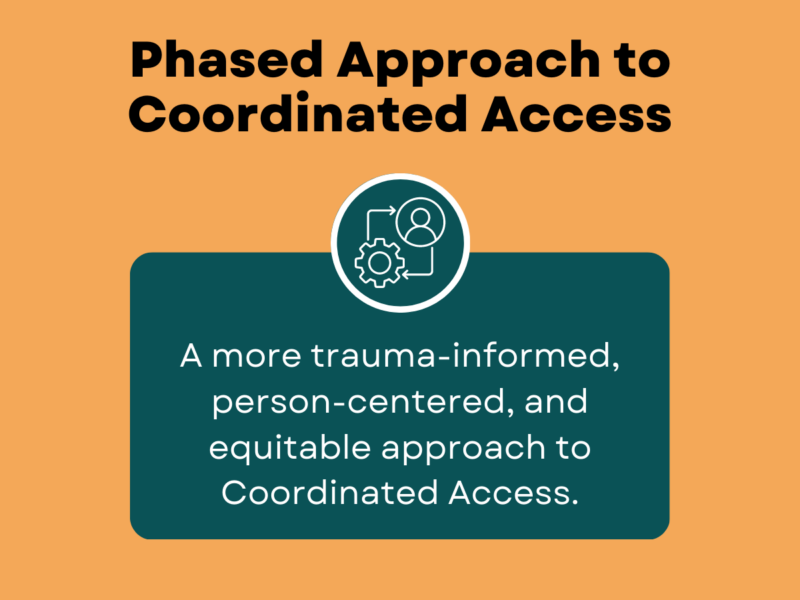
Typically, individuals must undergo a full assessment using the VI-SPDAT in order to be entered into Coordinated Access for Adults. Undergoing this full assessment can be time-consuming and traumatic, especially for individuals who haven’t engaged with services before.
This new phased approach to the VI-SPDAT, as part of the data collection pilot program, will allow outreach workers to gather the minimum information needed to determine an individual’s chronic homelessness status for the quality by-name list and accomplish the first phase of entering coordinated access — all in one interaction, and without needing to do a full vulnerability assessment.
Phase One: Smaller set of questions that identify individual, collect data for Built for Zero, start connecting person to services. Phase Two: full vulnerability assessment. Longer set of questions that determine eligibility for housing and services.With a phased approach, individuals who need it have time to develop relationships with service providers and be put on the path toward services and housing before going through the full VI-SPDAT. At the same time, people who are ready and willing to do the full VI-SPDAT will still have that option.
Creating connection points like this is important for the Built for Zero framework because individuals who aren’t currently connected to services might not show up on the by-name list. Intentionally expanding data collection through outreach and engagement services ensures that people experiencing unsheltered homelessness have equal access to and equitable representation in the systems meant to address chronic homelessness.
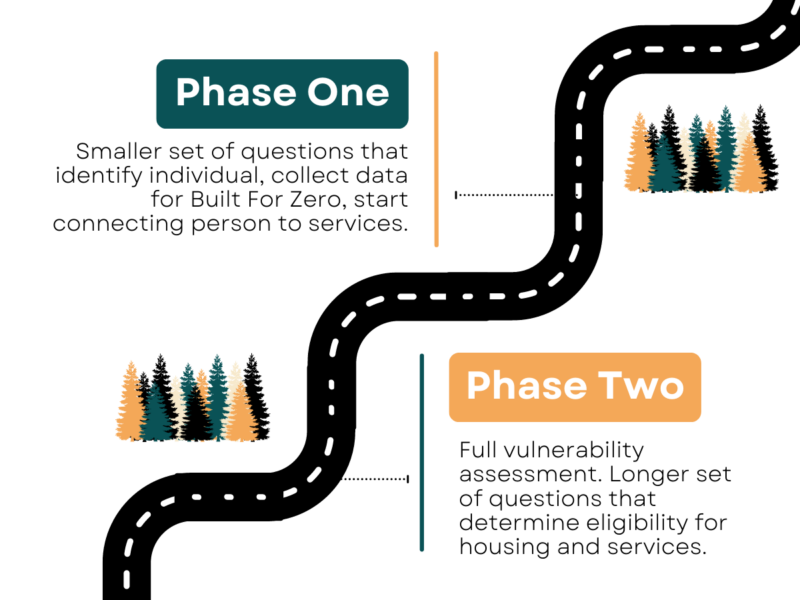
Pilot incorporates new data collection software
Another major component of the pilot program is the software tool that outreach teams will be using to conduct the Coordinated Access for Adults initial assessment— a mobile app called Survey123. In addition to serving as the platform through which outreach workers can conduct the first phase of the Coordinated Access for Adults assessment, the app uses ArcGIS software, meaning that it tracks geographic data as outreach workers interact with individuals.
Each time an outreach worker collects data on the app, the location is saved. This geolocation component tells us where outreach is happening, who is being connected with and who is making contact — and it provides aggregate data even when individuals decline to engage. These capabilities will allow for real-time coordination and evaluation that hasn’t been possible before now.
Community Solutions, the organization that created Built for Zero, directs Built for Zero communities to have geographic coverage of its outreach clearly mapped out, informed by data and regularly assessed to ensure that all unsheltered individuals within the community can be reached. Our use of this new software tool in our Outreach Data Collection Pilot will help us accomplish this goal.
Down the line, data collection tools like Survey123 will help us not only fill the gaps in our data, but help us calculate how many people we aren’t reaching, with an intentional focus on filling gaps in data for those who may not be known to the system.
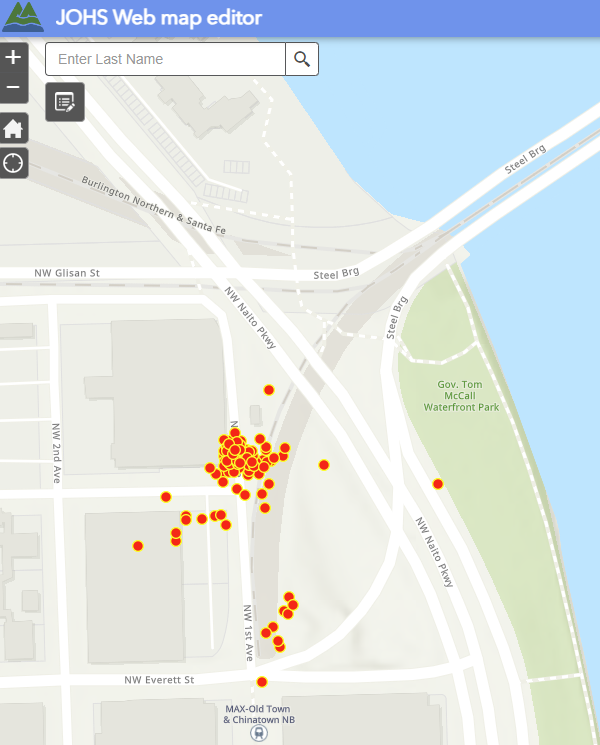
Housing Multnomah Now: A “pre-pilot” of the Outreach Data Collection Pilot
Housing Multnomah Now: A “pre-pilot” of the Outreach Data Collection Pilot
In March of this year the Multnomah County Board of Commissioners approved funding for Housing Multnomah Now, a pilot program addressing unsheltered homelessness in specific geographic areas that aims to move people directly from tents to apartments. Housing Multnomah Now’s first phase, which started in June, required a data collection tool that was ready for rapid deployment.
In a hyper-accelerated timeline, the Housing Multnomah Now team assembled a workgroup to conform Survey123 to the needs of Housing Multnomah Now and implement it into the field. Transition Projects, who is implementing the first phase of Housing Multnomah Now in a campsite under the Steel Bridge in Portland’s Old Town Chinatown, has assessed 150 people using the tool.
While Housing Multnomah Now is capturing data meant to be used to move an individual directly into housing, rather than stage them into Coordinated Access, the project is operating within the same Built for Zero framework to connect individuals experiencing homelessness to resources, and ultimately to housing, through data-driven systems.
Housing Multnomah Now provided an early opportunity to learn more about the functionality of Survey123, which will be helpful as we implement it into the Outreach Data Collection Pilot and beyond.

Next steps
Central City Concern and Transition Projects are forming the collaborative cohort workgroup with the Joint Office that will kick off the six-month Outreach Data Collection Pilot.
In the first few months of this pilot, the cohort workgroup will focus on problem-solving and building a practical workflow, refining the data collection tools and building momentum as the cohort moves toward client-level data collection. This workgroup will utilize the expertise of experienced providers to address workload and create a practical workflow that both reduces impact both on outreach staff and people being served.
The remaining months will focus on implementing Coordinated Access’ Initial Assessment into regular service delivery, to begin reporting client-level data for unsheltered individuals into the by-name list.




